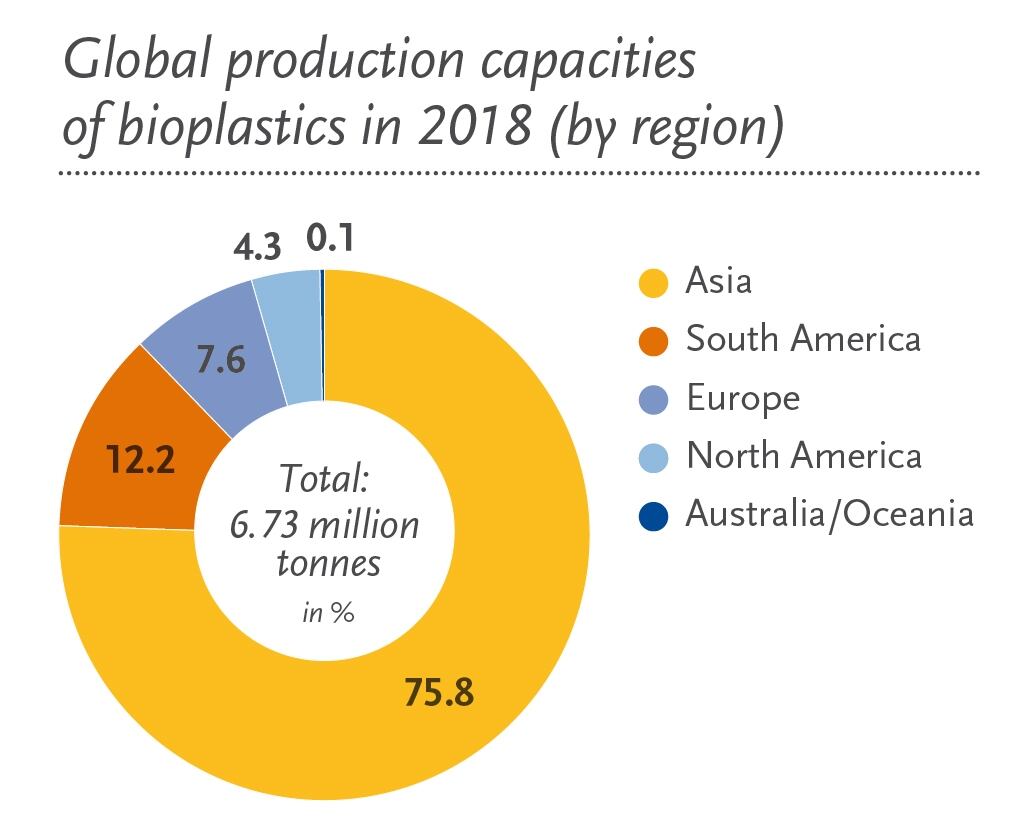Production capacity is set to increase from around 1.6 million tonnes in 2013 to 6.7 million tonnes by 2018, the trade organisation said in its annual market data update.
The data was gathered with scientific partners – the IfBB - Institute for Bioplastics and Biocomposites (University of Applied Sciences and Arts Hannover, Germany) and the nova-Institute (Hürth, Germany).
European Bioplastics once again re-iterated that land use and competition with food and feed for bioplastic feedstock, even with the forecasted growth, is minimal.
The data said bioplastics took up 0.01% (0.6 million hectares) in 2013 of the 1.4 billion hectares of arable land and by 2018 this would only rise to 0.02% (1.3 million hectares).

Asian market growth
Most of the currently planned projects are being implemented in Thailand, India and China. About 75% of bioplastics will be produced inAsiaby 2018, compared to 51% in 2013.
One recent example is Corbion Purac planning to invest in a 75 kT per annum PLA plant in Thailand.
The firm said with entry into polylactic acid (PLA), it intends to bring biodegradable products to the plastics industry.
Tjerk de Ruiter, CEO of Corbion, said it confirmed there is an attractive demand outlook for PLA, even if it is at a lower growth pace than previously assumed.
“Given our strong position in lactic acid, our unique high heat technology and the market need for a second PLA producer, we plan to forward integrate in the bioplastics value chain, from being a lactide provider to a PLA producer.”
Corbion said it will only start the investment if it can secure at least one-third of plant capacity in committed PLA volumes from customers.
The firm will continue selling lactides to existing and new PLA polymerization customers and lactide sales for the coatings and adhesives markets will also continue.
Market production and type
European Bioplastics data said that Europe, which is at the forefront of research and development, will be left with only roughly 8% of the production capacities compared with 17% last year.
Other regions, such as the USA and Asia, invest into measures ‘closer to market introduction’, which results in a faster market development than in Europe.
“We urge the EU legislators to consider and make efficient use of the immense environmental, economic growth and job creation potential of our industry. In this context, the Circular Economy Package should remain in the Commission’s 2015 Work Programme and the Waste Target Review should proceed as planned,” said François de Bie, chairman of European Bioplastics.
Biobased, non-biodegradable plastics, such as biobased PE and biobased PET, are gaining the most and PLA is a growth driver in biobased and biodegradable plastics.
Flexible and rigid packaging remains by far the leading application field for bioplastics.
